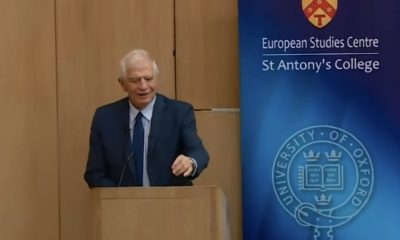Ekonomika
Kaip ES teisės aktų dalis bus sukurta
Dalintis:

 The media often report on how Brussels has decided on a new piece of legislation, but this is a simple version of what is a very complicated process. In our interactive infographic you find a more precise overview of how decisions that affect the EU and the people living in it are taken by MEPs and the member states.
The media often report on how Brussels has decided on a new piece of legislation, but this is a simple version of what is a very complicated process. In our interactive infographic you find a more precise overview of how decisions that affect the EU and the people living in it are taken by MEPs and the member states.Parliament became a central part of the EU decision-making process when the co-decision procedure was introduced in 1992. Under the co-decision procedure, a proposal tabled by the European Commission needs to be approved by both the European Parliament and the national governments - represented by the Council of the European Union - in order to become European legislation.
The system gave an equal say to both the elected MEPs and the national governments on a wide range of issues, including for example migration, energy, transport, environment, economic governance and consumer protection.In 2009 the co-decision procedure became the main way of creating European legislation under the Lisbon Treaty, which also renamed it the ordinary legislative procedure.
Pasidalinkite šiuo straipsniu:
-

 Bendra užsienio ir saugumo politikaprieš 5 dienas
Bendra užsienio ir saugumo politikaprieš 5 dienasES užsienio politikos vadovas bendradarbiauja su JK, vykstant pasaulinei konfrontacijai
-

 Iranasprieš 4 dienas
Iranasprieš 4 dienasKodėl dar neatsižvelgta į ES parlamento raginimą įtraukti IRGC kaip teroristinę organizaciją?
-

 Brexitprieš 3 dienas
Brexitprieš 3 dienasNaujas tiltas jauniesiems europiečiams abiejose Lamanšo sąsiaurio pusėse
-

 Kirgizijaprieš 4 dienas
Kirgizijaprieš 4 dienasMasinės Rusijos migracijos įtaka etninei įtampai Kirgizijoje



























